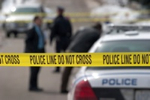Security's Challenge Summed Up In One Article

May 11, 2015 - Jeffrey A. Hawkins
In a very small and almost unnoticed article on May 7th by the Associated Press, it was reported that Campus Police Officers at the University of Rhode Island will start carrying firearms, making it the last public university in the U.S. to arm their campus police.
Take some time to think about this given what we have witnessed over the years on college campuses: this university will be the last one to allow their certified campus police officers to carry guns.
And remember that this article only addresses “public universities”; there are many more private colleges and universities that have quasi-police/security/public safety officers that dress and carry out duties like the police, without firearms.
Arming security has been and always will be controversial and to some extent I agree with the retractors.
As a former police officer and working in the security field over the years, my philosophy has always been if police officers have to go through hundreds of hours of training before they can carry a firearm, why would we let a security officer carry one with 40 hours, more or less, of training?
That doesn’t mean security personnel should not be armed, but don’t arm security personnel unless you are willing to invest in training and equipment, both initially and on going.
On the other hand, not to arm campus police, hospital police, or any other type of special police officers is insane.
But here is the ironic part of the article that sums up the mentality of what every security director deals with: the Executive Director of the American Association of University Professors (the faculty union) stated, in part, “The impetus for having guns was phony…This is a happy place…It’s not a place where guns are necessary.”
Maybe that faculty union spokesperson missed this list of worst shootings on or near college campuses (from a 2014 AP article):
June 7, 2013: Five people are killed and several others are wounded when John Zawahri, 23, shoots his father and brother and then shoots at strangers in cars and at Santa Monica College, where students were taking final exams. Zawahri is fatally shot by officers in the college library in Santa Monica.
April 2, 2012: Seven people are killed and three are injured when a 43-year-old former student opens fire at a tiny Christian school, Oikos University, in Oakland, according to authorities. One Goh was charged with seven counts of murder and three counts of attempted murder but is being held at a Northern California mental hospital after psychiatric evaluations concluded last year that he suffers from long-term paranoid schizophrenia and is unfit to stand trial.
Feb. 14, 2008: Five students are killed and 18 are wounded when former student Steven Kazmierczak, 27, opens fire in a lecture hall at Northern Illinois University in DeKalb, Ill., before committing suicide.
Feb. 8, 2008: Two people are killed when Latina Williams, 23, opens fire during an emergency medical technology class at Louisiana Technical College in Baton Rouge, La.,before shooting herself.
April 16, 2007: Thirty-two people are fatally shot in a dorm and classroom at Virginia Tech in Blacksburg, Va., before the gunman, Seung-Hui Cho, 23, kills himself.
Sept. 2, 2006: Two people are killed when gunman Douglas W. Pennington, 49, shoots his sons before killing himself during a visit to Shepherd University in Shepherdstown, W.Va.
Oct. 28, 2002: Three professors are killed when Robert Flores Jr., 41, who was flunking out of the University of Arizona nursing school, shoots them before killing himself in Tucson, Ariz.
Jan. 16, 2002: Three people are killed and three are wounded when a recently dismissed graduate student at the Appalachian School of Law in Grundy, Va., returns to camps and targets the dean, a professor and a student. Peter Odighizuwa, 42, pleaded guilty in the attack and was sentenced to life in prison.
Aug. 15, 1996: Three professors are shot and killed when Frederick Martin Davidson, 36, a graduate engineering student at San Diego State, is defending his thesis before a faculty committee and pulls out a handgun. Davidson was later sentenced in California to three life terms in prison without parole.
I am sure all these colleges and universities were “happy places” before these incidents.
I truly hope management in all the other high-risk organizations (public and private) take a look at the position that they put security and special police officers in when they ask them to look and act like the police, but do not equip and train them like the police.
Jeffrey A. Hawkins is a senior public safety/security professional with over 30-years of diverse experience working for profit, not-for-profit, and government organizations on a local, regional, and global level.
Hawkins is a former law enforcement supervisor who transitioned into the private security sector serving as Chief Security Officer in the pharmaceutical, health care, cultural properties, religious, and corporate industries. Hawkins graduated from the Chicago Police Academy and has over 1,000 hours of training in the areas of security, law enforcement has a B.S. degree in Business Administration, and an M.S. degree in Management. He graduated from the Chicago Police Academy and has over 1,000 hours of training in the areas of security, law enforcement, and emergency management with such specialty agencies as the FBI, Northwestern University School of Police Staff and Command, and counter terrorism agencies in Israel.
Hawkins is a media authority on the topic of security and public safety and frequent speaker across the country. For more information, visit: https://jeffreyhawkins.net






